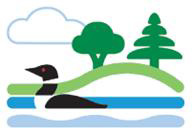|
What is PP
Spunbond Fabric ?
Technically PP =Polypropylene is a plastic noted for
its light weight, being less dense than water; it is
a polymer of propylene. It resists moisture, oils, and
solvents. Since its melting point is 121°C (250°F), it
is used in the manufacture of objects that are sterilized
in the course of their use. Polypropylene is also used
to make textiles, ropes that float, packaging material,
and luggage.
NB : PE =widely used plastic. It is a polymer of ethylene,
and is produced at high pressures and temperatures in
the presence of any one of several catalysts, depending
on the desired properties for the finished product. Polyethylene
is resistant to water, acids, alkalizes, and most solvents.
Its many applications include films or sheets for packaging,
shower curtains, unbreakable bottles, pipes, pails, drinking
glasses, and insulation for wire and cable. Worst biodegradability
than PP.
Conclusion: in fact, PP and PE are very similar, they
are both plastic. For European markets, we usually order
PP woven (import tax related issues). No matter PP or
PE, if we are required “woven” bag, there are the same
kind of bags. But non-woven material (much lighter) is
totally different from “woven”.
|
|
Since recent years, it tends to replace the traditional
existing textiles, fabric and paper for some obvious
reasons. The main asset of Non woven polypropylene (P.P.)
fabric is that it is made of spun bond polypropylene
which can be recycled, naturally decomposes ( untreated
non woven fabric can decompose in the outside within
a few months only..) and completely incinerates without
any production of poisonous pollutants (does not pollute
directly or indirectly the environments,..
It does not contain any harmful substances itself and
does not require the use of poisonous gaz, wasted oil
or effluents.
|
|
Non woven P.P fabric carries a lot of useful properties:
- Excellent softness
- Anti bacteria
- water resistance (even repellence with waterproofing treatment t,
- Air permeability,
- Fire resistance,
- high level of tensile strength
- high elongation rate
- no allergies to human bodies
- relatively cheap to produce.
What are the possible applications of PP Spunbond
Fabric?
it can be applied to manufacturing a useful
list of products related to promotional needs or storage
and packaging (bags),Medical and hygiene (disposable
products), protective equipments and items (disposable
bed sheets), agricultural UV protective films, …
Some of our partner factories enjoy the ability to really
make the non woven fabric for years and as well got the
expertise on the same site to fabricate any kind of finished
products. We can thus QC the entire process from start
to finish. |
Environnementaly Friendly?
If you are concerned about our world running out of resources,
the idea of recycling and using such products as
non woven P.P. can go a long way for the concept
of environmentally friendly products and can be expanded
when you choose to use non woven P.P. fabric.
Due to our daily habits and
consumption behaviors our natural resources and our
environment have been challenged despite implementation
of new technologies and improved living standards.
It leads nowadays to the production of a huge amounts
of disposable products every day. 
The growth of non-woven fabrics and
the various prospective such material can offer for
the future is now seen as an new possible approach to
deal with contemporary environmental concerns. Non-woven
products are predicted to become a much larger market
in the future. Ecovista Manufacturing Group wished to be on the forefront
of this new industry and associated with this image.
|
|
Non woven fabrics got environmental
benefits over other traditional fabrics and papers in
regards to mainly its production process and its recycling
benefits due to natural degrading properties and the
recycle process for its production. Cheap, Non woven
is very competitive with other fabrics (often cheaper
than paper or plastic bag) and is very durable with
all the attribute of woven fabrics as mentioned above
( softness, air permeability, dehumidifying, cushioning,
resilience, good light weight, ability to repel water
and to evaporate water, resistance to mold and insect.,
etc..)
However, we always emphasize to our
clients that any added material or treatment to a basic
PP fabric may very often minimize this environmentally
friendly assets.
What are the existing treatments
for spun bond Fabric?
Various add –on treatment can be added to the PP fabric
such as:
-Flame retardency ( for Airplanes, Hotels designated products..)
-Antibacterial (medical use products
-Florescent treatment (caution, promotion and advertising
items)
|
|

-Compounded treatments ( adding layers of others fabric
for various purpose such as Aluminum film, PE film, Eva
film, PVC, Absorbent paper, CPP film.. etc.. )
-Anti Mildew treatment ( storage purpose)
Lamination treatment for offset printing,
-Etc..
We usually try to minimize our offers of products requiring
such treatments as it often enhance the utilizations
of the products at the expense of its recycling or environmental
assets.
What are the different process used in the construction of PP items ?
The most common is of course standard sewing/stitching process but we can, ultrasonic sewing, thermal bounding, use heat sealing with tape, glue.... |